Rudd
What you need to know about the rudd. Includes habitat, identifying features and what you can do to reduce its impact.
Rudd (Scardinus erythropthalmus)
Rudd is an invasive fish native to Europe that has been found in scattered locations in the lower Great Lakes. A member of the minnow family, the fish was introduced to the United States in the early 1900s, likely through the bait trade.
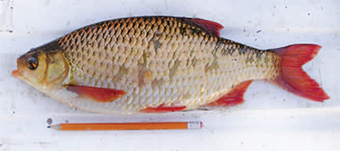
Rudd are often found in waters that are still or slowly moving with thick vegetation. They can adapt to a wide range of freshwater habitats and can tolerate poor water quality. Adult rudd eat both aquatic plants and insects, while young rudd feed on algae and small invertebrates such as snails, insects and worms.
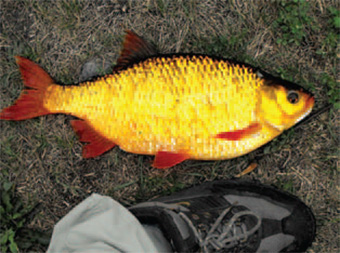
Range
Rudd were first found in Ontario in 1990 in the St. Lawrence River. Since then the fish has been found in a few scattered locations in the St. Lawrence. In 1997 rudd were discovered in western Lake Ontario and eastern Lake Erie. Outside its native range, the rudd has also been introduced to more than 20 American states.
Impacts of rudd
More research is needed to determine the impacts of rudd on native species in North America. However, scientists are concerned about the long-term effects of the rudd’s breeding habits and diet.
- Rudd are able to breed with the native golden shiner, an important The offspring are hybrids, which could lead to a loss of genetic diversity in the population of golden shiners.
- Young rudd compete with native species for habitat and food, such as algae and small invertebrates.
- Adult rudd can eat large amounts of aquatic plants along shorelines, which can degrade spawning and nursery habitat for native fish such as northern pike, muskellunge and yellow perch.
To prevent this unwanted invader from expanding its range in Ontario, the province has banned the possession and sale of live rudd and other invasive fish species.
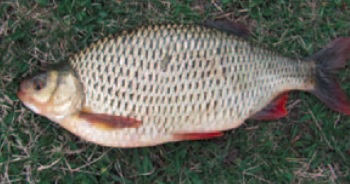
How to identify rudd
- The rudd is a large, deep-bodied minnow with a small, upturned mouth.
- Adult rudd are 10 to 25 centimetres long. The largest rudd found in Ontario was 38.5 centimetres.
- Adult rudd resemble native golden shiners, with a few slight differences.
Check the list below to know if you have a rudd or a golden shiner.
Rudd (Scardinius erythrophthalmus)
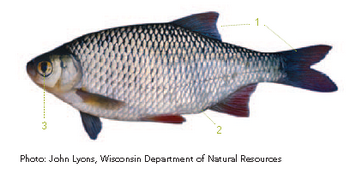
Traits
- Fins are bright red
- Fully scaled belly (keel)
- Eyes are red or have a red spot
Golden Shiner (Notemigonus crysoleucas)

Traits
- Fins are yellow-green (except in spawning adults). Breeding males have red-orange fins and an orange anal fin with a black outline.
- No scales on belly (keel)
- Eyes are yellow-green
What you can do
- Learn how to identify rudd and how to prevent the spread of this unwanted species.
- Never buy or keep live rudd. It’s against the law to keep live rudd or other invasive fish.
- Don’t release any live fish into Ontario lakes, rivers or streams. Return or donate unwanted aquarium fish to a pet store or local school.
- If you have any information about the illegal importation, distribution or sale of live rudd, report it immediately to the ministry tips line at
1-877-TIP-SMNR (847-7667) toll-free any time, or contact your local ministry office during regular business hours. You can also call Crime Stoppers anonymously at1-800-222-TIPS (8477) . - If you’ve seen a rudd or other invasive species in the wild, please contact the toll-free Invading Species Hotline at
1-800-563-7711 , or visit Ontario's Invading Species Awareness Program to report a sighting.
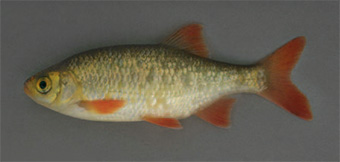
Other resources:
For more information:
Please contact the Invading Species Hotline at
This fact sheet may be reproduced for non-commercial purposes. © 2012
Cette publication est également disponible en français.